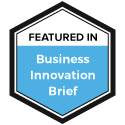
The Blind Spot of Leadership: Why Ego and Instinct Sometimes Override Data
The Blind Spot of Leadership: Why Ego and Instinct Sometimes Override Data
Leaders have access to a wealth of information that can guide them toward better decisions. Yet, we often hear stories of leaders choosing to ignore the evidence in favor of their instincts. Sometimes, these choices lead to breakthroughs. Other times, they result in missed opportunities, strained relationships, or even outright failure.
So why does this happen? What drives a leader to see data that favors one path and confidently choose another based on their gut or ego? And perhaps more importantly, how can leaders circumvent this tendency to ensure they make balanced, thoughtful decisions?
The Psychology Behind the Gut Decision
The answer lies in the complex interplay of cognitive biases, emotions, and external pressures. It’s not always about arrogance or ignorance—though those play a role—it’s often about being human. Leaders, like anyone else, are shaped by their experiences, beliefs, and fears.
Imagine a CEO who has built their company from scratch, relying on instinct at every step to achieve success. When data begins to suggest a different direction, it’s not just the numbers they’re challenging; it’s their very identity as a decision-maker. The thought of abandoning their tried-and-true methods for something unfamiliar can feel like betraying their own story.
Fear also plays a significant role. Fear of failure, of uncertainty, of losing control—all of these can cloud judgment. Leaders often convince themselves that their instincts are a form of superior wisdom, a failsafe honed by years of experience. But this overconfidence can lead them to dismiss evidence as incomplete, flawed, or irrelevant.
And let’s not forget the external pressures. Leaders operate under the watchful eyes of boards, shareholders, and employees, all of whom have their own expectations and agendas. These dynamics can push a leader to make decisions that are politically advantageous or align with stakeholder opinions rather than grounded in data.
The Risks of Ignoring Data
When leaders prioritize their instincts or ego over evidence, the consequences can be significant. Entire industries are littered with cautionary tales of companies that failed to adapt because their leaders dismissed clear signs of change.
Take Blockbuster, for instance. In the early 2000s, the data was clear: consumers were shifting toward digital streaming. Netflix even approached Blockbuster with a partnership offer, but the company’s leadership chose to double down on their brick-and-mortar business model. They trusted their instincts, believing that physical stores would remain the dominant force in entertainment. The result? Netflix thrived, and Blockbuster became a relic of the past.
Ignoring data doesn’t just lead to missed opportunities; it can erode trust within an organization. Teams spend countless hours analyzing and presenting data. When leaders consistently dismiss this work, it sends a message that their efforts aren’t valued. Over time, this can breed disengagement, resentment, and a lack of collaboration.
The Role of Intuition in Leadership
But does this mean leaders should ignore their gut instincts entirely? Not at all. Intuition has its place in decision-making, especially when data is incomplete, inconclusive, or fails to capture the nuance of human dynamics. Great leaders know how to integrate their instincts with evidence, using intuition as a refining lens rather than the sole driver of decisions.
For example, when Steve Jobs was developing the first iPhone, market research at the time suggested there was little demand for a touchscreen device. But Jobs had a vision—an intuitive sense of where the market could go—and he trusted it. The key difference was that Jobs didn’t dismiss data outright; he used it to challenge and refine his intuition, creating a product that ultimately transformed the tech industry.
The lesson here is not to pit intuition against data but to find a balance between the two. Leaders must use data as a guide while allowing intuition to provide context and creativity.
How to Circumvent Ego-Driven Decisions
So how can leaders avoid the pitfalls of ego and instinct overriding evidence? One powerful approach is to create systems and relationships that encourage accountability and reflection. Leadership isn’t meant to be a solo endeavor—it’s a collaborative process that thrives on diverse perspectives and checks and balances.
One way to achieve this is by building an inner circle of trusted advisors. These individuals act as sounding boards, offering unbiased insights and helping leaders stay grounded. Imagine a CEO who consults their advisor not just for strategic guidance but for what we might call an “empathy check.” This is a moment to ask hard questions: Am I making this decision for the right reasons? Am I prioritizing the needs of the organization, or am I protecting my own ego? What impact will this choice have on the people around me?
Empathy checks are not just about considering others; they’re about cultivating self-awareness. When leaders take the time to reflect on their motivations, they can catch themselves before ego-driven decisions take root.
Another strategy is to create a culture where dissenting opinions are encouraged. Leaders often fall into the trap of surrounding themselves with people who echo their views, but the best decisions come from environments where teams feel safe to challenge authority. For example, before making a major decision, a leader could ask their team, “What am I missing? Who sees this differently?” These simple questions can uncover blind spots and ensure that all perspectives are considered.
Regular self-reflection is equally important. Leaders should make it a habit to review past decisions, identifying patterns where ego or intuition may have overshadowed data. These reflections can be facilitated by mentors, coaches, or even peers, creating a feedback loop that fosters continuous growth.
Finally, leaders can implement structured frameworks for decision-making, such as Force Field Analysis or Design Thinking. These approaches combine qualitative and quantitative insights, ensuring that decisions are both evidence-based and human-centered.
Conclusion: The Collaborative Nature of Leadership
Great leadership is not about always having the answers. It’s about asking the right questions, seeking the right input, and being willing to challenge your own assumptions. The best leaders recognize that their role is not to impose their will but to guide their organizations toward thoughtful, sustainable outcomes.
The next time you’re faced with a tough decision, pause and ask yourself: Am I listening to the data, or just listening to myself? And more importantly, who can I invite into the conversation to help me see what I might be missing?
Leadership is not a solo act—it’s a journey best navigated together.








Recent Comments